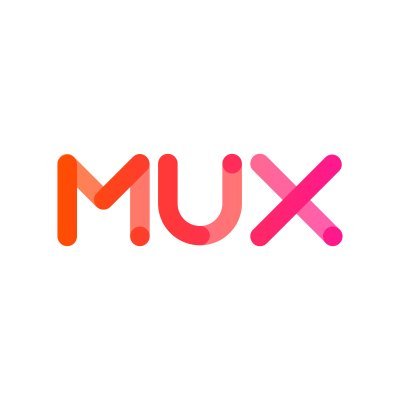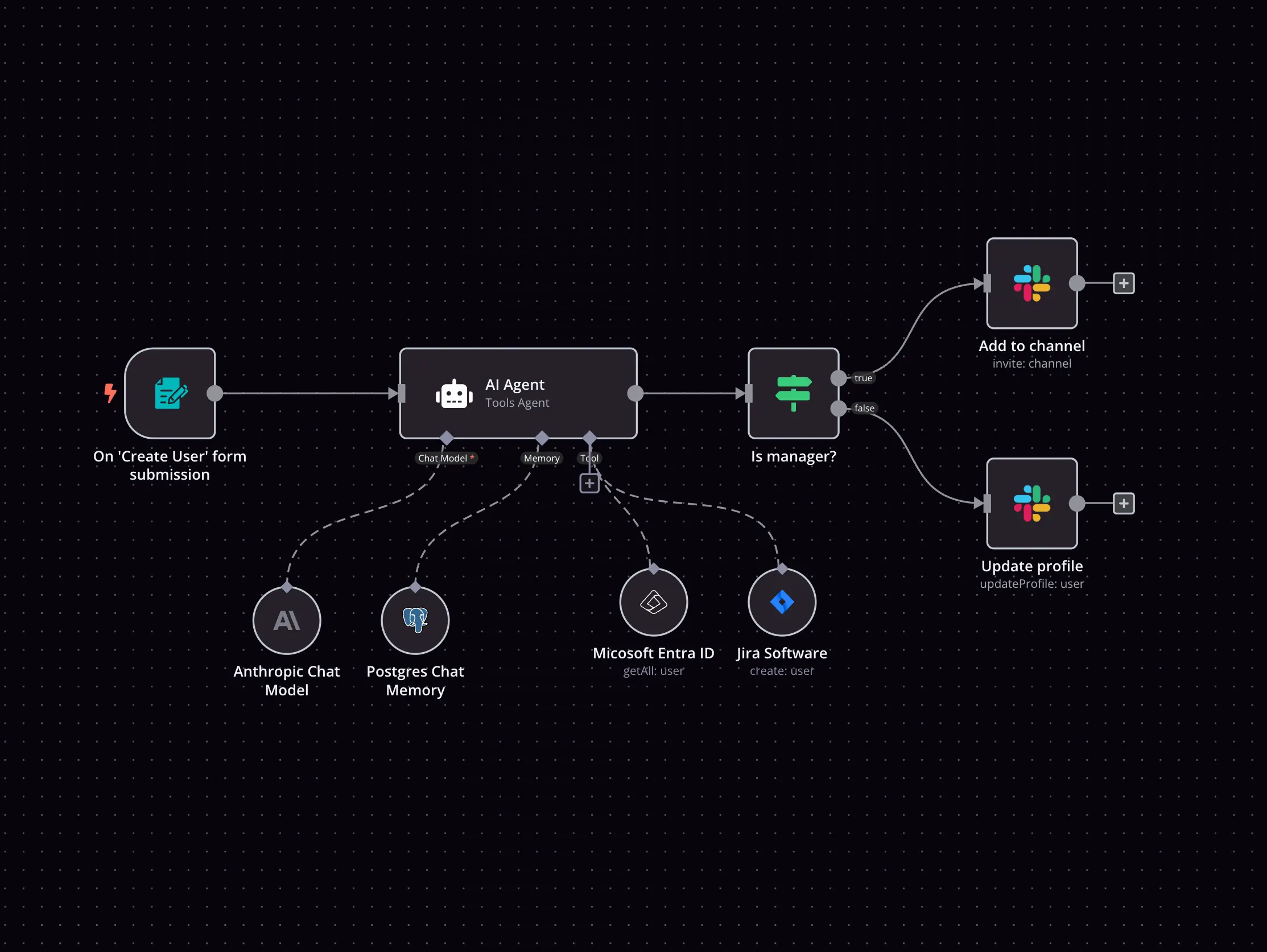Flotiq and Mux integration
Save yourself the work of writing custom integrations for Flotiq and Mux and use n8n instead. Build adaptable and scalable Development, workflows that work with your technology stack. All within a building experience you will love.


How to connect Flotiq and Mux
Create a new workflow and add the first step
In n8n, click the "Add workflow" button in the Workflows tab to create a new workflow. Add the starting point – a trigger on when your workflow should run: an app event, a schedule, a webhook call, another workflow, an AI chat, or a manual trigger. Sometimes, the HTTP Request node might already serve as your starting point.
Build your own Flotiq and Mux integration
Create custom Flotiq and Mux workflows by choosing triggers and actions. Nodes come with global operations and settings, as well as app-specific parameters that can be configured. You can also use the HTTP Request node to query data from any app or service with a REST API.
Supported API Endpoints for Flotiq
List content types
Retrieves a list of all content types available.
Create content type
Creates a new content type.
Update content type
Updates an existing content type.
Get single content type
Retrieves details of a specific content type.
Delete content type
Deletes a specific content type.
Create content type
Create a new content type definition.
Get content type
Retrieve a specific content type definition.
Update content type
Update an existing content type definition.
Delete content type
Delete an existing content type definition.
Create content type
Creates a new content type for the application.
Update content type
Updates an existing content type in the application.
List content types
Retrieves a list of all content types available in the application.
Get single content type
Retrieves a specific content type by its ID.
Delete content type
Deletes a specified content type from the application.
Create content type
Creates a new content type definition via API.
Update content type
Updates an existing content type definition.
List content types
Retrieves a list of content type definitions.
Get single content type
Retrieves a single content type definition by ID.
Delete content type
Deletes a specific content type definition by ID.
List content objects
Retrieves a list of all content objects.
Create content object
Creates a new content object.
Update content object
Updates an existing content object.
Get single content object
Retrieves details of a specific content object.
Delete content objects
Deletes a specific content object.
Create content object
Creates a new content object in the application.
Update content object
Updates an existing content object in the application.
List content objects
Retrieves a list of all content objects available in the application.
Get single content object
Retrieves a specific content object by its ID.
Delete content object
Deletes a specified content object from the application.
List deleted content objects
Retrieves a list of all deleted content objects.
Create content object
Creates a new content object based on a content type.
Update content object
Updates an existing content object.
List content objects
Retrieves a list of content objects.
Get single content object
Retrieves a single content object by ID.
Delete content object
Deletes a specific content object by ID.
Retrieve content object
Retrieve the schema of a specific Content Object by sending a GET request.
Delete content object
Delete a specific Content Object identified by its ID.
Retrieve GraphQL schema
Retrieve the GraphQL schema that describes your data.
Execute GraphQL queries
Execute GraphQL queries to retrieve specific data.
Get blogposts
Retrieve details of blogposts content type.
Create content type
Create a new Content Type Definition in the system.
Update content type
Updates the definition of the specified content type using a PUT request.
Update blogposts
Updates the schema definition for blog posts.
To set up Flotiq integration, add the HTTP Request node to your workflow canvas and authenticate it using a generic authentication method. The HTTP Request node makes custom API calls to Flotiq to query the data you need using the API endpoint URLs you provide.
See the example hereThese API endpoints were generated using n8n
n8n AI workflow transforms web scraping into an intelligent, AI-powered knowledge extraction system that uses vector embeddings to semantically analyze, chunk, store, and retrieve the most relevant API documentation from web pages. Remember to check the Flotiq official documentation to get a full list of all API endpoints and verify the scraped ones!
Supported API Endpoints for Mux
Create signing key
Creates a new signing key pair.
Create signing key
Creates a new signing key.
Retrieve signing key
Retrieves a specific signing key.
Retrieve a signing key
Retrieves the details of a signing key that has previously been created.
Create signing key
Creates a new signing key.
List signing keys
Retrieves a list of signing keys.
Retrieve signing key
Retrieves a specific signing key by its ID.
Delete signing key
Deletes a specific signing key by its ID.
Create signing key
Creates a new signing key.
List signing keys
Retrieves a list of signing keys.
Retrieve signing key
Retrieves a specific signing key.
Delete signing key
Deletes a specific signing key.
Create an asset
Creates a new asset.
Retrieve an asset
Retrieves a specific asset.
Create asset
Create a new Mux Video asset.
Retrieve asset
Retrieves the details of a specific asset.
Retrieve asset input info
Returns a list of the input objects that were used to create the asset along with any settings that were applied to each input.
Create playback ID
Creates a playback ID that can be used to stream the asset to a viewer.
Retrieve a playback ID
Retrieves information about the specified playback ID.
Update MP4 support
Allows you to add or remove mp4 support for assets that were created without it.
Update master access
Adds temporary access to the master version of the asset for 24 hours.
Create asset track
Adds an asset track, such as subtitles or alternate audio, to an asset.
Create an asset
Creates a new asset for video storage.
List assets
Retrieves a list of assets.
Retrieve an asset
Retrieves a specific asset by its ID.
Delete an asset
Deletes a specific asset by its ID.
Update an asset
Updates the details of an existing asset.
Create asset
Creates a new asset.
List assets
Retrieves a list of assets.
Retrieve asset
Retrieves a specific asset.
Delete asset
Deletes a specific asset.
Create a live stream
Creates a new live stream.
Retrieve a live stream
Retrieves a specific live stream.
Create a live stream
Creates a new live stream.
List live streams
Retrieves a list of live streams.
Retrieve a live stream
Retrieves a specific live stream by its ID.
Delete a live stream
Deletes a specific live stream by its ID.
Update a live stream
Updates an existing live stream.
Create live stream
Creates a new live stream.
List live streams
Retrieves a list of live streams.
Retrieve live stream
Retrieves a specific live stream.
Delete live stream
Deletes a specific live stream.
List playback restrictions
Retrieve a list of playback restrictions.
Create a playback restriction
Create a new playback restriction.
Delete a playback restriction
Remove an existing playback restriction.
Retrieve a playback restriction
Get details for a specific playback restriction.
Update the referrer playback restriction
Modify the referrer playback restriction settings.
Update the user agent restriction
Change the user agent restriction settings.
Create playback restriction
Create a new playback restriction for videos.
List playback restrictions
Retrieve a list of playback restrictions.
Delete playback restriction
Delete a specific playback restriction.
Retrieve playback restriction
Retrieve details of a specific playback restriction.
Update referrer playback restriction
Update the referrer domain for a playback restriction.
Update user agent restriction
Update the user agent for a playback restriction.
List DRM configurations
Retrieve a list of DRM configurations.
Retrieve a DRM configuration
Get details for a specific DRM configuration.
List DRM configurations
Retrieve a list of DRM configurations.
Retrieve DRM configuration
Retrieve details of a specific DRM configuration.
List transcription vocabularies
Retrieve a list of transcription vocabularies.
Create a transcription vocabulary
Create a new transcription vocabulary.
Retrieve a transcription vocabulary
Get details for a specific transcription vocabulary.
Delete a transcription vocabulary
Remove an existing transcription vocabulary.
Update a transcription vocabulary
Modify an existing transcription vocabulary.
Create transcription vocabulary
Create a new transcription vocabulary.
List transcription vocabularies
Retrieve a list of transcription vocabularies.
Retrieve transcription vocabulary
Retrieve details of a specific transcription vocabulary.
Delete transcription vocabulary
Delete a specific transcription vocabulary.
Update transcription vocabulary
Update a specific transcription vocabulary.
List web inputs
Retrieve a list of web inputs.
Create a new web input
Create a new web input.
Create a new web input
Creates a new web input resource.
List web inputs
Retrieves a list of web inputs.
Create new web input
Create a new web input.
List Incidents
List all incidents.
Get an Incident
Retrieve details of a specific incident.
List Related Incidents
List incidents related to a specific incident.
Create a new direct upload URL
Creates a new URL for direct upload.
List direct uploads
Retrieves a list of direct uploads.
Create new direct upload URL
Creates a new direct upload URL.
List direct uploads
Retrieves a list of direct uploads.
Export raw Mux data
Overview of exporting raw Mux data.
Export raw video view data
Overview of how to export raw video view data.
Track video engagement
Track your video engagement and performance.
Setup alerts
Overview of setting up alerts.
Make your data actionable
Make your data actionable with metadata.
Ensure privacy compliance
Ensure privacy compliance for your data.
Integrate custom domain
Integrate a Data custom domain.
Understand metric definitions
Overview of metric definitions used in data analysis.
List Usage
Retrieve a list of delivery usage data.
To set up Mux integration, add the HTTP Request node to your workflow canvas and authenticate it using a generic authentication method. The HTTP Request node makes custom API calls to Mux to query the data you need using the API endpoint URLs you provide.
See the example hereThese API endpoints were generated using n8n
n8n AI workflow transforms web scraping into an intelligent, AI-powered knowledge extraction system that uses vector embeddings to semantically analyze, chunk, store, and retrieve the most relevant API documentation from web pages. Remember to check the Mux official documentation to get a full list of all API endpoints and verify the scraped ones!
Flotiq and Mux integration details
Automate lead management
Using too many marketing tools? n8n lets you orchestrate all your apps into one cohesive, automated workflow.
Learn more
Save engineering resources
Reduce time spent on customer integrations, engineer faster POCs, keep your customer-specific functionality separate from product all without having to code.
Learn more
FAQ
Can Flotiq connect with Mux?
Can I use Flotiq’s API with n8n?
Can I use Mux’s API with n8n?
Is n8n secure for integrating Flotiq and Mux?
How to get started with Flotiq and Mux integration in n8n.io?
Looking to integrate Flotiq and Mux in your company?
The world's most popular workflow automation platform for technical teams including
Why use n8n to integrate Flotiq with Mux
Build complex workflows, really fast


